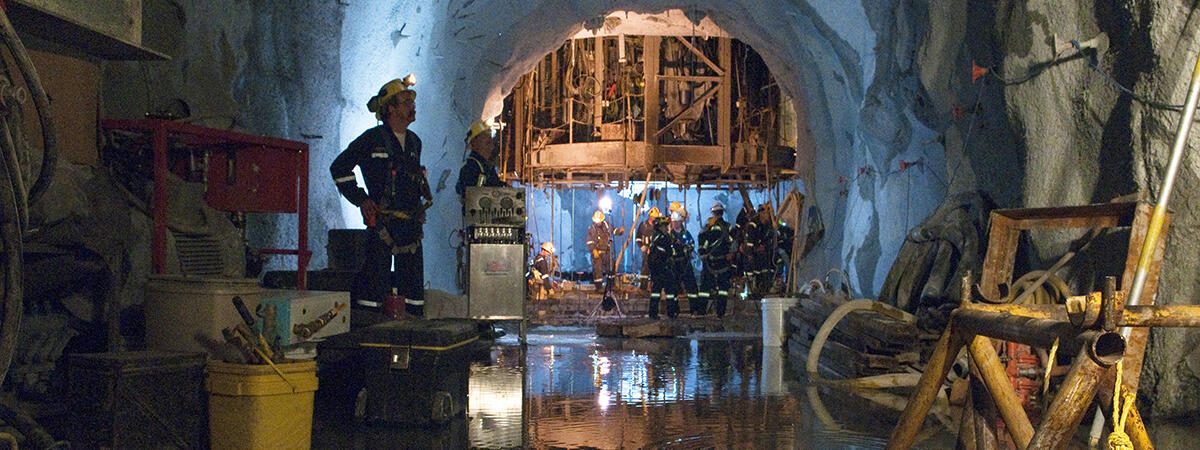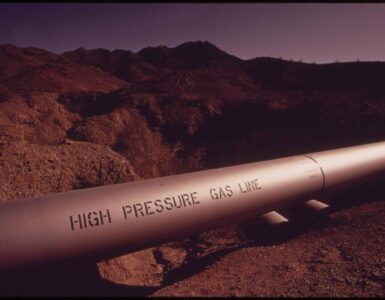Businesses and community leaders in Arizona’s historic “Copper Corridor” are calling foul on the U.S. Department of Agriculture (USDA) for its recent decision to rescind an important step toward completion of a land swap that is essential to the development of the Resolution Copper mine.
At stake are thousands of jobs in the struggling region, said Superior Mayor Mila Besich, who is trying to get the word out about how important the Resolution Copper Project is to the mining region.

Besich said the unexpected setback came after years of negotiating in good faith with all concerned parties to address environmental and other community concerns. The copper mine, which has been working for almost a decade to get all permits in place, is projected to employ 3,700 workers and generate more than $1 billion in annual economic benefit when fully operational.
“When the Resolution Copper project was introduced to Superior, it brought a glimmer of hope and opportunity to our small, close-knit community. Its predecessor, the Magma Mine, was shuttered in 1996 and opportunities were scarce for Superior to provide employment and business prospects for our diminishing population,” said Besich in a recent editorial in the Copper Area News.
“Arizona’s Copper Corridor is the equivalent of Yukon gold. Some of the richest and most accessible copper ore deposits are found here in eastern Pinal and southern Gila counties. Two of the three copper smelters left in the United States operate in our region,” said Besich, who also serves as executive director of the Copper Corridor Economic Development Coalition, a region-wide private-public partnership to advance the economic and community development of Arizona’s mining country.
Huge global need for copper
Having a steady home-grown copper supply will be a competitive advantage for U.S. manufacturing companies, said business and economic development groups who have worked through the process. Arizona stands to benefit tremendously.

The mine will be one of the largest producers in the country. Copper is an essential component in mobile devices, medical equipment and clean energy technologies, and demand is growing worldwide. The World Bank estimates global copper demand could rise by 200 percent by 2050.
“Mining belongs in this part of Arizona and it can be done responsibly while protecting the environment and the beautiful landscape that we love and cherish,” Besich said.
Years of negotiation shot down under new administration
At issue is a land swap involving the Oak Flat area, which is considered sacred to tribes in the Southwest. To alleviate those concerns, the mine underwent seven years of negotiations with the tribes to put into place measures everyone could live with, Resolution Copper officials said.
Several changes were made to the project as a result, including permanent protection of natural features of the Apache Leap cultural and recreational area and a partnership to protect Emory oak tree groves in the area.
The land exchange legislation allows for the exchange of 2,422 acres of land above the copper deposit for 5,459 acres of Arizona land owned by Resolution Copper that will become public land.
In January, the mine was notified that the U.S. Forest Service approved the land swap in its final environmental impact statement. A 45-day review was to follow. But when President Joe Biden took office, the USDA announced it was rescinding the environmental impact statement, halting the objection phase, and revoking the land swap.
USDA wants another “thorough review”
In a statement, the USDA said it is requiring the project go through another “thorough review” with all parties involved because of a new Presidential Memorandum involving tribal relationships. The memorandum refers to ensuring that the Forest Service “has complied with the environmental, cultural, and archaeological analyses required,” the USDA stated.
But company officials said they already have engaged all parties “every step of the way.”
The Forest Service, the lead agency charged with overseeing the federal approval process, spent nearly a decade gathering insights from local leaders, Native American tribes, NGOs, community organizations and businesses, company officials said.
“Simultaneously, Resolution Copper participated in hundreds of other conversations and engagements, including numerous community working groups, to collect the input that continues to shape the project,” the company said in a prepared statement.
Voices in support of Resolution Copper
Business and community leaders including Governor Doug Ducey have issued public statements protesting the action. Here are some of their voices:
Gov. Doug Ducey

“I am extremely disappointed in the Administration’s decision to cease progress on Arizona’s Resolution Copper project, which is set to grow jobs and is estimated to create a direct and indirect economic impact of more than $1 billion to Arizona’s economy every year,” Ducey said.
“An effective and predictable regulatory environment is a critical factor in Arizona’s booming economy. In Arizona, we follow what works. Undoing lengthy, comprehensive, and already-completed federal environmental studies on a whim with the changing of federal administrations doesn’t work. This type of activity threatens an untold number of major projects in Arizona and around the country.”
Pete Rios, former vice chair, Pinal County Board of Supervisors

“As Pinal County District 1 supervisor and a native to the Hayden-Winkelman area, I am extremely familiar with copper mining — both the opportunity it represents and its legacy,” Rios said. “I know the Resolution Copper project and the enormous opportunities a project like this can unlock for Pinal County. I think you’ll agree, as I do, that Resolution Copper is good for Arizona and good for the people of Pinal County.”
Garrick Taylor, interim president, Arizona Chamber of Commerce and Industry

“The Forest Service conducted its work with transparency and with a genuine commitment to public engagement. This will be a tremendous job creator. Not only will Resolution Copper be a major employer, but it will lead to construction activities and new commercial development such as housing, hotels and retail. What’s more, we know from the Environmental Impact Statement that it will be a safe, environmentally responsible project that will help meet the ever-growing demand for copper.”
Jacob Evenson, Boilermakers Local 627, business manager
“Throughout this process, Resolution Copper consulted with multiple tribal nations throughout the state of Arizona. Hundreds of our Boilermakers that are also tribal members have been at the table helping shape the vision of the Resolution Copper mine. To have a clean energy revolution, we need copper to power our windmills, move electric cars, and operate solar panels. We demand the USDA reissue the Final Environmental Impact Statement without delay and continue progress towards construction.”
Mike Oddonetto, Oddonetto Construction, Inc., Globe
“Resolution Copper has been an important source of business for my firm over the past year, enabling us to expand our own training program, and I look forward to continuing to work with the company to grow our business.”
Rich Nolan, president, National Mining Association
“The mining industry stands ready to support the Biden administration’s aggressive plans for electrification and modernizing our nation’s electric grid – actions that will require massive amounts of copper and other mined materials – but it is imperative that our permitting processes proceed in a timely manner to support those goals.”
By the numbers: new jobs, tax revenues, industry
Resolution Copper is considered one of the most significant private investments in Arizona history, developing one of the world’s largest untapped copper deposits in Arizona’s Copper Triangle.
Economic impact studies show that once in operation, the mine would:
- Supply up to one-quarter of the nation’s copper demand and produce up to $61 billion in economic value for Arizona over the 60-year life of the project.
- Create approximately 3,700 jobs with 1,500 direct employees and 2,200 indirect and induced jobs. Employees will be paid approximately $134 million in wages and benefits per year. Approximately 600 employees and contractors are already on site.
- Generate between $88 to $113 million in state and local tax revenue each year. An additional $546 million will be spent annually in goods and services from local businesses.
















Add comment